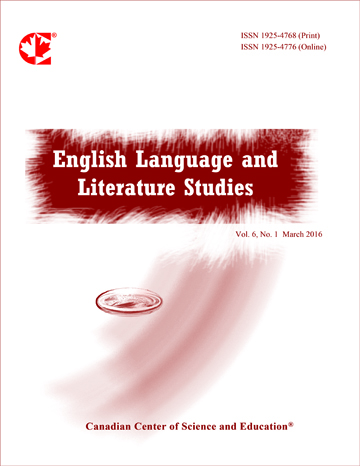A Comparative Analysis of the Generic Structure of RA English Abstracts in Chinese-Medium and English-Medium Linguistics Journals
- Mindan Wei
- Yunping Liu
- Junli Liu
Abstract
This paper aims to analyze the generic structure of English abstracts in both Chinese-medium and English-medium linguistics journals. A total of 40 abstracts published in the year of 2011-2013 are collected randomly, with 20 written by native English speakers from Applied Linguistics and Language and the other 20 by Chinese scholars from Journal of Foreign Languages and Foreign Language Teaching and Research. The BIMRD/C model is adopted in this study as distinct differences can be found in the two corpora in terms of the Background move. Three major differences are revealed. Firstly, the abstracts written by native English speakers are more complete in structure than those by Chinese writers as they tend to omit the Background move and the Discussion/Conclusion move. Secondly, most Chinese writers prefer to combine the Method move with the Introduction move and put it at the very beginning of the abstract, while native writers tend to use the independent and the integrated Method nearly equally. Thirdly, in the Results move, Chinese scholars tend to objectively report their study results in detail by “Results indicate that…”, sometimes listing them, while native English writers sometimes choose to highlight their research results by patterns of “we find (show, propose) that” and “I propose” although most of them also use such objective patterns to present their research results. This study is especially helpful for those Chinese writers who hope to publish their paper in international journals.
- Full Text:
 PDF
PDF
- DOI:10.5539/ells.v5n4p98
